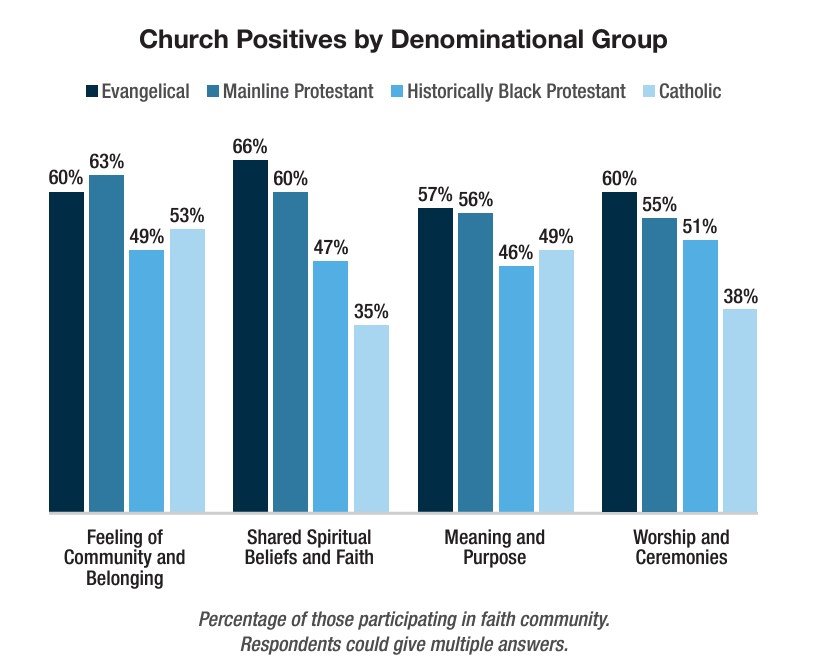How does someone find their way into a church? Most would argue that it’s through some kind of invitation, and I would agree.
But what keeps them there? What is it that, once they engaged a church in some form or fashion, has them remain in attendance? The answer might surprise you. For most groups of people, it is not a shared faith.
Instead, it’s a shared sense of community.
According to the recent release of the 2024 State of the Bible survey by the American Bible Society, a sense of community and belonging edge out shared spiritual beliefs as the velcro that keeps them attached and, as a result, attending. This is true among Mainline Protestants, historically Black Protestants, and Catholics. The only group that served as an outlier was Evangelicals where 66% are drawn to a church by a shared sense of faith, but even among that grouping, a “feeling of community and belonging” came in second.
But the overall ranking among all four groups, when combined, ranked community and belonging as the primary reason for attending, followed by shared spiritual beliefs, meaning and purpose, and then, coming in last, worship and ceremonies. In fact, less than half of all respondents combined (48%) said worship or various ceremonies drew them to church.

This demonstrates the importance of understanding one of the more important shifts related to evangelism and outreach of our day—namely, the desire to belong before the choice to believe.
This is new thinking for many. It used to be assumed that people needed come to faith before they would join a community of faith. Not anymore. Today, people want to belong before they believe.
Which means you need to get people connected as soon as you can after you invite them to come and explore, because only if they are connected will they stay long enough to really explore and consider embracing the faith.
Evangelism is both process and event, and today, the process actively involves assimilating them into your community. From that vantage point, and often only from that vantage point, will they be positioned to consider the claims of Christ for and on their life. So while you are intentionally evangelizing, you have to be intentionally assimilating them.
So ask yourself, “Do you have any room in your community to welcome someone who hasn’t made a decision for Christ yet?”
You better make some. It’s how they come, how they will decide, and ultimately, will also determine whether they stay.
This article originally appeared here and is used by permission.

